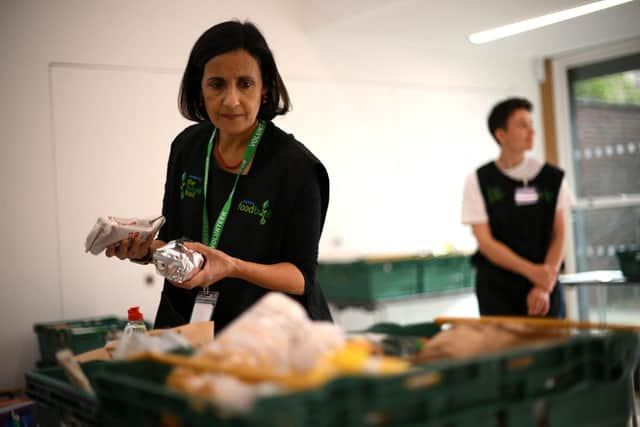UK’s biggest foodbank’s emergency parcels to Fife children every week
and live on Freeview channel 276
But this represents just a fraction of the Kingdom’s children living in poverty in the area, suggesting many more may be going without.
The Trussell Trust distributed a record 480,000 food parcels for children across the UK in the six months to September, including 3176 in the region.
Advertisement
Hide AdAdvertisement
Hide AdThis compares with 1531 children’s parcels given out in the area in the same period five years before.


The number of foodbanks has also gone up from seven to nine in that time - but many others operator independently from the trust.
Emma Revie, the charity’s chief executive, said: “Children shouldn’t have to worry about the cost of living crisis, yet in the past six months, food banks in the Trussell Trust network provided more than 483,000 emergency food parcels for children across the UK.
“People are coming to food banks telling us they are unable to turn the heating on and are skipping meals so they can feed their children.
Advertisement
Hide AdAdvertisement
Hide Ad“Food banks in our network are set to face their hardest winter yet as the cost of living emergency is driving a tsunami of need. This is not right.
“Food banks are not inevitable, and as a charity we campaign and push for the changes needed to ensure a future where they are not needed.
“But right now, we need the help of the UK public so that we can make sure that every child, every family, every person experiencing hunger is supported.”
Compared to the overall population, children are more likely to be in low income households, government figures show.
Advertisement
Hide AdAdvertisement
Hide AdIn Fife, 9047 under-16s were living in absolute poverty last year, some 14% of the population of that age. Absolute poverty means a family income is below the level needed to maintain basic living standards in terms of food, shelter and housing.
In the UK, it measures disposable income after taxes and includes money received through benefits.
People are below this poverty line if their income falls below 60% of the median UK income as it stood in 2011, adjusted for inflation.
In the recent autumn statement, Chancellor Jeremy Hunt agreed to increase benefits in line with rocketing inflation.
Advertisement
Hide AdAdvertisement
Hide AdA spokesperson for the UK government said it had also put in place other measures to support “households in need following the aftershocks from the pandemic and Putin’s illegal war in Ukraine”.
This included sending another Cost of Living Payment in November worth £324 to more than eight million households, part of a £1,200 package for those on the lowest incomes.
Further payments worth up to £900 will be given to eligible households in the 2023/24 financial year.
In Scotland, the £41 million Scottish Welfare Fund can also help people with additional costs.
Advertisement
Hide AdAdvertisement
Hide AdA spokesperson for the Scottish Government said: “We are doing what we can to help families, within the limited powers we have. We have allocated almost £3 billion in this financial year to help households face the increased cost of living, including £1 billion in providing services and financial support not available elsewhere in the UK.”